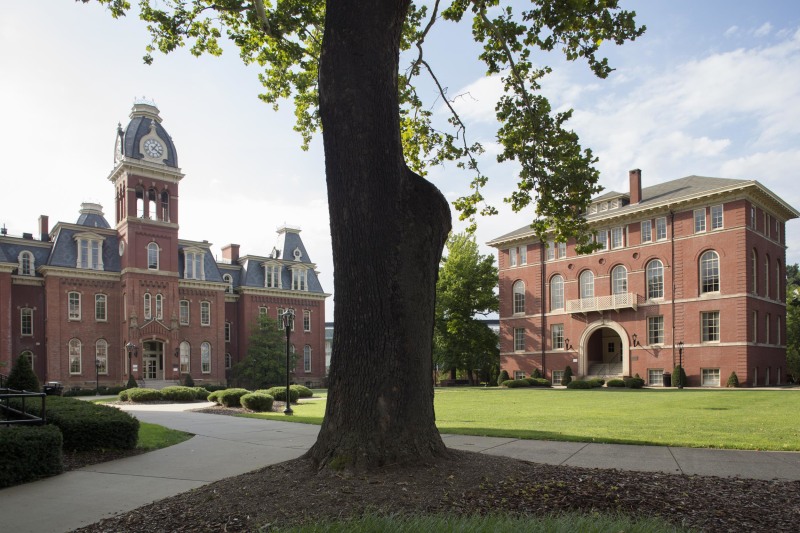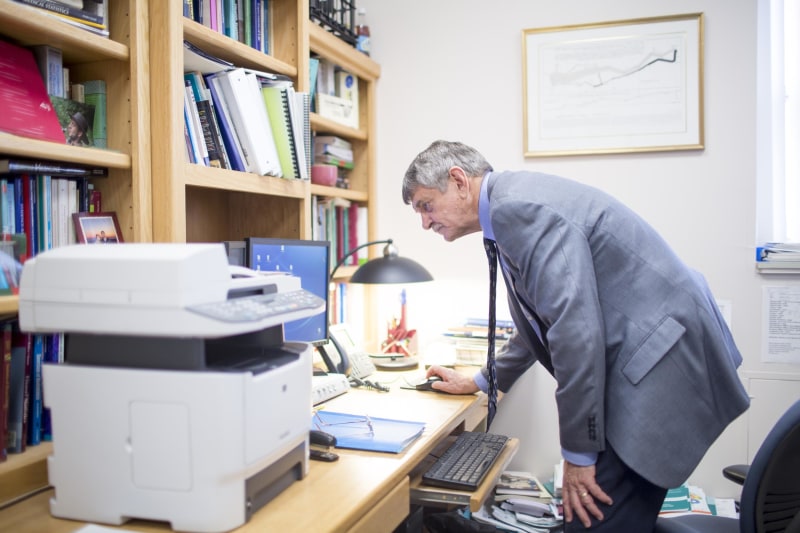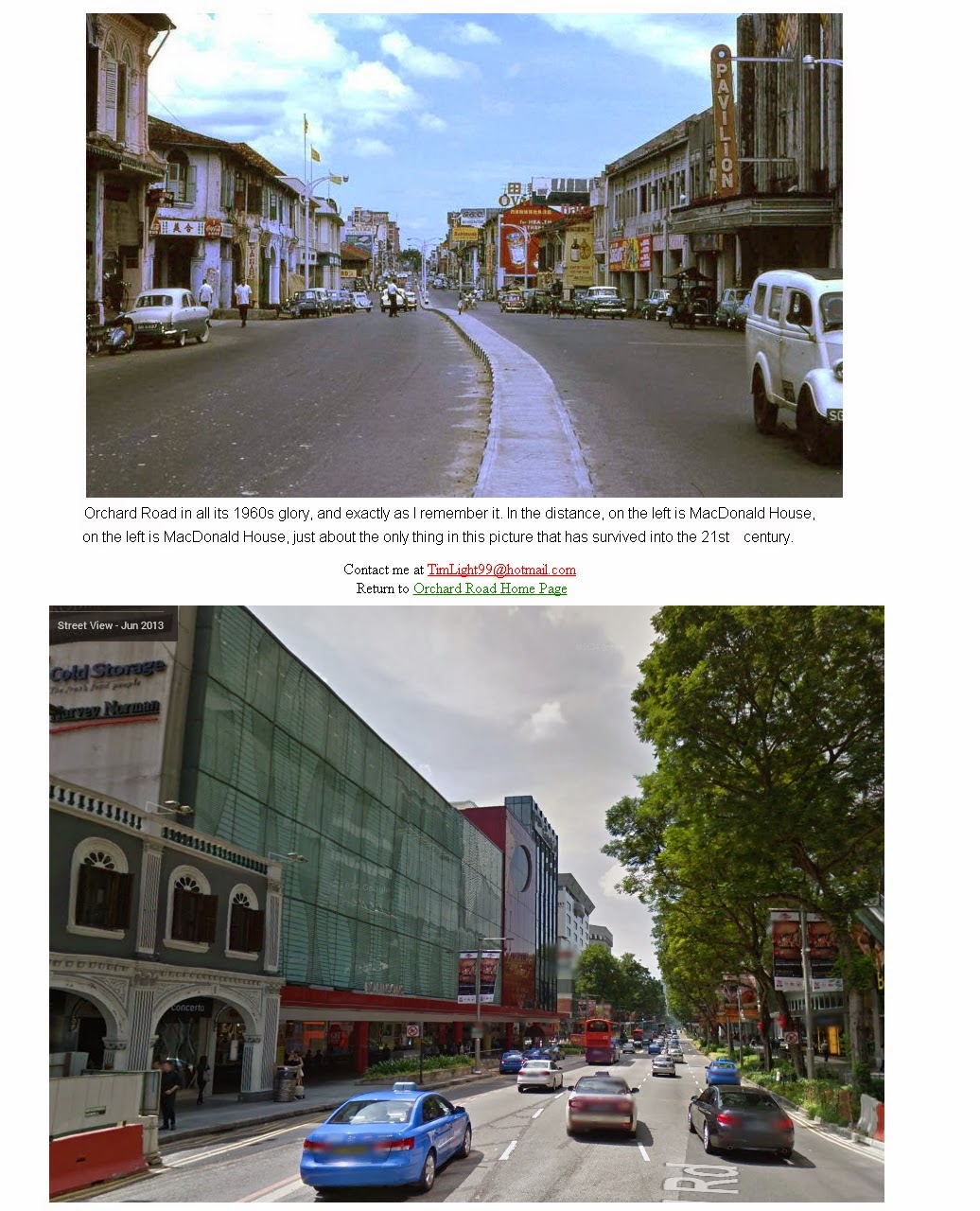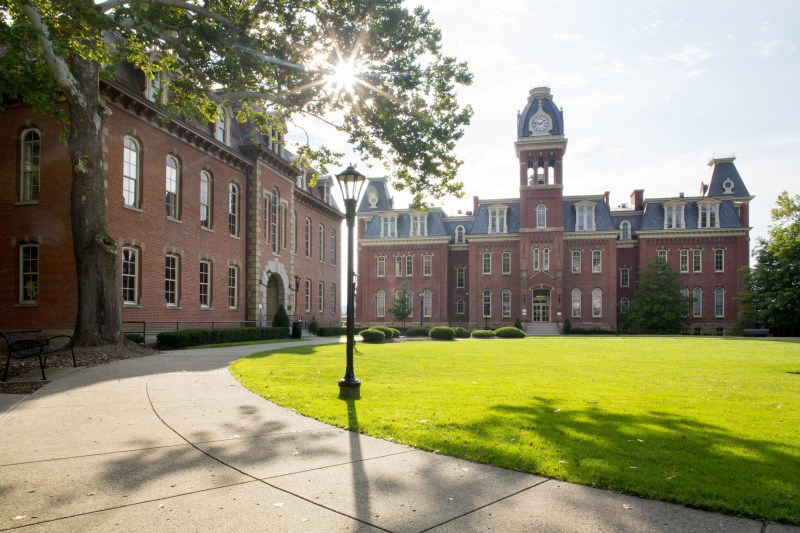Former NUS Professor exposed as a fraud [
Link]
He seemed like the Doogie Howser of India, able to crack the country’s best medical school, and work there as a 21-year-old doctor. Anoop Shankar later claimed to add a Ph.D. in epidemiology and treat patients even as he researched population-wide diseases. He won a “genius” visa to America, shared millions in grants, and boasted of membership in the prestigious Royal College of Physicians.
In 2012 West Virginia University hand-picked this international star to help heal one of the country’s sickest states. At just 37, Shankar was nominated to the first endowed position in a new School of Public Health, backed by a million dollars in public funds. As chair of the epidemiology department, he was also poised to help the university spend tens of millions of additional tax dollars. “This is about improving healthcare and improving lives,” said university president Jim Clements, announcing a federal grant for health sciences. “We could not be more proud.”
But there was a problem: Shankar isn’t a Ph.D. He didn’t graduate from the Harvard of India. He didn’t write dozens of the scholarly publications on his resume, and as for the Royal College of Physicians, they’ve never heard of him. He does have a master’s degree in epidemiology from the University of North Carolina and an Indian medical degree, but at least two of his green card references—attesting to “world class creativity,” “genius insight,” and “a new avenue for treating hypertension”—were a forgery.
These are just some of the results of an inquiry into Shankar’s history, one that began as a standard pre-appointment review only to dilate into an ongoing, overlapping 18-month investigation. The case has captured the attention of two WVU offices, the Monongalia County courts, U.S. Immigration, and, in a lead role, Ian Rockett, chair of the promotion and tenure committee at the School of Public Health.
NBC News spoke with people familiar with all three probes and reviewed Rockett’s 91-page report on Shankar, prepared partly in support of a lawsuit against his former colleague. Those documents, and several of Shankar’s colleagues, tell a similar story, describing a charming, bright-minded impostor who built a career on a base of lies.
His case exposes some of the profound dysfunction sometimes attributed to higher education, where the sanctity of research is threatened by skyrocketing retractions, epic frauds, and a system that seems ill-equipped to police itself. “When you leave institutions in charge of an investigation,” rather than, say, an outside watchdog organization, “you are leaving the fox in charge of the henhouse,” says Ivan Oransky, a founder of the whistleblower blog Retraction Watch.
How Many More Are Out There ?
Although Shankar was forced out of WVU in December of 2012, the university has yet to address the case publicly, allowing Shankar and his work to continue unchallenged. In the last year alone, he’s published at least three papers, including one in the prestigious Journal of the American Medical Association. He also landed a new job on the backs of taxpayers: associate professor of family medicine at Virginia Commonwealth University, a large public university in Richmond.
In response to questions from NBC News, WVU pledged to make “a complete and full public statement” when “all the facts are clear and known.” But in the meantime, Shankar—who repeatedly postponed interviews after NBC made multiple attempts to reach him over the course of several months—has both an untarnished record and his green card, and he continues self-inventing.
“I have never wittingly seen his kind before,” says Rockett, who went public to raise awareness of academic fraud. “How many more are out there?”
 |
Campus of West Virginia University in Morgantown, West Virginia.
|
In the late summer of 2012, Rockett was asked to give Shankar’s resume a standard review ahead of the young man’s appointment to a new “Chair of Excellence” in the School of Public Health.
Almost right away there was trouble, Rockett says. He noticed that Shankar was claiming an “M.D.,” which in India is a higher degree than an American M.D. It requires a dissertation, so Rockett scanned Shankar’s CV for 1996 papers—the same year he had supposedly earned a medical degree. He found one, and popped its title into the PubMed database.
His screen blinked and up came an abstract of the paper, a study of a certain hormone excreted during heart attacks. It was definitely the same paper, he says. It had the same title, same journal, same volume and issue number. The author was even a researcher named “Shankar.”
But the publication date wasn’t 1996, the year Shankar claimed to have finished his degree. It was 1976, the year after Shankar was born. Shankar was indeed a precocious researcher, Rockett thought: He was an infant.
Rockett’s first find led to more. Some of the problematic entries were dated incorrectly, he says. Some didn’t seem to exist at all. None were authored by Anoop Shankar. When Rockett had a list of 11 apparent frauds, he took them to Alan Ducatman, the interim dean of the School of Public Health. Ducatman’s first hope was that the situation could be salvaged, according to a person familiar with the deliberations.
Four years earlier, after a search committee pulled Shankar’s resume from a pile, Ducatman believed he recognized the footprints of genius. Shankar was only an associate professor at the National University of Singapore, but his academic history seemed to promise much more. Here was a past winner of India’s national academic talent scholarship, which goes to less than 1 percent of teenage test takers. Here was a top 3 graduate of the All India Institute of Medicine in New Delhi, which itself is 25 times more selective than Harvard.
Ducatman recruited Shankar with the promise of a full-time paid Ph.D.-trained assistant, and he supported Shankar’s application for an O-1 visa, reserved for foreigners with “extraordinary abilities.” In return Shankar churned out high-profile research. He linked popcorn to heart disease and the plastic chemical BPA to diabetes.
The work earned WVU national attention from the major medical journals and writers from Reuters and Fox News. That same week the National Institutes of Health had awarded Shankar a $400,000 grant, the first in a hoped-for wave of nearly $2 million dollars in government funding.
Let’s not jump to conclusions, Rockett recalls being told. Shankar may have a good explanation. Besides, the dean allegedly said, this endowed position is bigger than both of us and it would be a mistake to pile on. (Ducatman, who was also a co-author of Shankar’s, declined to comment for the record.)
Rockett was given just two days to complete his review, but it was enough to get Shankar’s appointment postponed, if not outright canceled. Following university procedure, he shared his findings with WVU’s general counsel and the Office of Research Integrity. Then he tried to push Shankar from his mind.
Shankar pushed back in on the morning of August 22, 2012. That’s when a 27-year-old Indian man named Deeban Ganesan walked into Rockett’s office, professing an interest in Rockett’s research on suicide. The man would later claim not to have any prior special relationship with Shankar, but in truth Shankar was his advisor, and the source of Ganesan’s job on campus, according to court documents submitted by Rockett.
The only witness to Ganesan's meeting with Rockett was an even closer ally to Shankar. Srivinas Teppala, a 32-year-old doctoral candidate in epidemiology, regarded Shankar as his mentor and champion, according to the same court documents. Shankar had gotten Teppala into the program, and was his dissertation adviser, in addition to serving as co-author on at least a dozen scholarly articles—the essential kindling of a young academic’s career.
Together these two gave the university’s Office of Social Justice an explosive version of that morning meeting. In their telling, Rockett’s door was closed and his mind was on sex, not suicide. As Ganesan began to talk, according to his discredited statement to the university, Rockett interrupted him.
“You Indians have nice brown skin,” Rockett allegedly said. “But you smell weird with the spices that you use for cooking.”
Right about then the grey-haired professor supposedly pulled his chair closer and snatched at the young man’s penis.
Teppala claimed that from the hallway, he could then hear Rockett rise from his chair and say loudly to Ganesan, “Here, taste my white c--k.”
Ganesan said he fled rather than reciprocate and that Rockett flew into a rage, his words echoing into the corridor: “I will destroy you!”
Rockett says he laughed out loud when he first read this account in the Office of Social Justice. The story was just so preposterous. He said the real meeting was brief. The door was open. And he was sitting the whole time. Besides, he told the school’s investigator, according to a copy of Rockett’s official reply, “I do not speak in this manner whatsoever.”
“I love Indian food, and I do not find their spices or curry offensive or ‘weird.’ I dine almost every Tuesday evening with my wife and friends at a local Indian restaurant.”
Still, Rockett was appalled and a heavy thought settled in his mind: this fight wasn’t going to end well for someone.
Rockett resolved that it wouldn’t be him. He filed a defamation suit against Shankar and the two students. It hinged in part on proving that Shankar had a motivation for threatening Rockett’s reputation. So together with his wife, Sandra Putnam, and his attorney, Bader Giggenbach, Rockett began to roll back more of Shankar’s deceptions.
 |
| Ian Rockett, Ph.D., professor of epidemiology in the West Virginia University School of Public Health. |
Some of the sharpest inconsistencies regarded where Shankar went to school. He claimed to have gone to medical school at All India Institute of Medical Sciences in New Delhi, but his medical license, not to mention online photos of him with friends, placed Shankar at Kottayam Medical College, more than 1,600 miles away.
He also claimed to have gotten a Ph.D. in epidemiology at Mahatma Gandhi University, where he later claimed to serve as an assistant professor of preventive medicine. But the institution doesn’t have a department of preventive medicine—or, for that matter, epidemiology. There also is no Anoop Shankar among the school’s 1,116 Ph.D. dissertations from 1988 to 2009, according to an online database accessible to the public. (Neither AIIMS nor Kottayam Medical College responded to queries. A former professor from Kottayam Medical College, however, recalls teaching Shankar there.)
As Rockett worked on his court case, WVU’s Office of Research Integrity conducted its own investigation, turning up evidence of about 30 additional false publications on Shankar’s resume, according to a person familiar with the report. Shankar had explained away Rockett’s initial discoveries as “clerical errors” made by a new assistant. But in the face of these new allegations, he abruptly resigned in December of 2012—just four months after being nominated for the school’s most prestigious position in public health.
WVU later concluded that there was “no evidence” to support the claims against Rockett, and, after he filed a formal complaint against the two students, they left the university without receiving their degrees. Earlier this year a county judge also supported Rockett, ordering the students to pay him nearly a quarter million dollars for damages.
"These are not Victimless crimes."
Neither Ganesan nor Teppala showed up in court or responded to NBC News requests for comment. The University of Texas Medical Branch at Galveston also declined to comment on Teppala, who, despite never getting his Ph.D., is a current postdoctoral fellow at the school.
But Circuit Judge Phillip Gaujot found that they were liable for “the intentional infliction of emotional distress,” not to mention conduct that was “so extreme and outrageous as to exceed all bounds of decency.” Although Shankar has never admitted wrongdoing, Ganesan cracked in late November 2012, apparently telling one of his mentors that Shankar had fed him the false story of sexual assault.
“I’ve made a big mistake,” Ganesan told the mentor, according to documents filed with the Office of Social Justice.
In January 2013, after Shankar resigned, Ganesan again wrestled with his conscience and returned to the mentor’s office. He said that Teppala had failed a polygraph and that “the situation was getting serious.” He said that Shankar had told him to “take a vacation and leave the area.”
Just then, as the mentor counseled Ganesan to come clean publicly, the young man’s cell phone rang. It was Shankar on the line and Ganesan walked out to take the call.
The mentor never saw or heard from him again.
Later that year Shankar paid Rockett $45,000 in an out-of-court settlement and moved out of Morgantown. He didn't admit liability or fault, but also didn't appeal the results of the university’s internal review. More than 18 months after the first sign of fraud, WVU has yet to notify the wider academic community of Shankar’s troubling history.
They also haven’t withdrawn their sponsorship of Shankar’s visa, according to a senior immigration officer who declined to be named because he is not authorized to discuss the case publicly. Under the university’s integrity code, anyone accused or suspected of a breach is protected from public allegations until the university’s investigation is completed. This one evidently is not.
"Since questions about Dr. Shankar's credentials were first raised, WVU has appropriately followed its policies, procedures and applicable law,” John Bolt, a university spokesperson, said in a statement. “WVU shared its discoveries with law enforcement. Many of the issues raised are confidential personnel matters, and the University does not discuss these publicly.”
WVU’s response is typical foot-dragging, according to Retraction Watch cofounder Adam Marcus. But every passing day means more resources could be wasted. When someone falsifies their credentials, Marcus said, the assiduous thing to do is “check their work” for fraud. The costs of inaction are hours lost, money squandered, and progress stalled. “The last thing you want to do as a Ph.D. student is to waste valuable years of your life trying to replicate or build on what proves to be falsified studies,” he said. “These are not victimless crimes.”
There’s been a well-documented rise in false scientific research, driven up by declines in resources and positions.
One recent study found a ten-fold increase in retractions since 1975. And some of the most egregious examples of falsified results begin with doctored CVs.
In 2010, four years after an initial complaint, Duke University finally began investigating medical researcher Anil Potti’s cancer breakthroughs after a journalist discovered he was lying about being a Rhodes Scholar. Much of Potti’s research was discredited and in 2011
he resigned from Duke, although he never acknowledged wrongdoing.
"My jaw dop to the floor."
So far Shankar’s work itself has yet to come under scrutiny, but some anticipate a similar walk of shame, given his history of fraud. Sarah Knox, one of Shankar’s former colleagues, says that his consistently clear cut results are uncommon in large studies.
“It’s amazing,” she remembers remarking to herself as he racked up dozens of publications a year. “How come my results don’t do that?”
One day she discovered an explanation. A student of hers was trying to determine whether exposure to a certain common chemical had an effect on people. It was a new student, not yet trained in statistics, so Shankar’s personal statistician ran the analyses. And the results were perfect: the chemical was indeed showing a widespread effect.
Or so it seemed.
A closer look revealed that Shankar had instructed the statistician to control for the effect of gender and ethnicity, Knox said. She asked the student why and the answer disturbed her: without the controls the effect only registered in white males, she said. White males, Shankar suggested, weren’t enough of a population to impress the big medical journals.
“My jaw dropped to the floor,” recalled Knox.
Here was a person so comfortable with deception that he was willing to teach it to students, she thought. When Shankar left, Knox took over his role in the student’s paper and she tried to re-run the analyses. She couldn’t, the statistician told her. Shankar took everything with him, computer programs and all.
Now Shankar seems to have taken his shape-shifting to the web. He sometimes
bills himself as the director of a fancy-sounding research center that doesn’t exist, and he recently
created a fake site for India’s leading public health foundation. He populated it with a bogus interview with a Reuters journalist, who is quoted as saying: “Professor Shankar, your work is fascinating!”
He also boldly applied for a job at Virginia Commonwealth University. He dropped the PhD claim, kept the misleading “MD,” and apparently added new experience as a clinician and past medical resident, according to the advertised requirements for the job. But this summer, in response to questions from NBC News, VCU opened its own inquiry into Shankar’s credentials. Last month, the former star quietly left his second American university.
“We looked into his background,” Anne Buckley, a university spokesperson, said in a statement. “Shankar was employed by VCU and is no longer employed here.”
But the deceptions continue, and one of the boldest was due to land in libraries this fall. Shankar was a guest editor of the Journal of Environmental and Public Health, a global publication with board members from Yale, Cornell and the Environmental Protection Agency. Back in March the journal put out a call for papers for the August issue, listing Shankar’s affiliation with Washington University School of Medicine.
The school has never heard of him, however, and a spokesperson for the journal—which is looking into how the false affiliation came to them—said in a statement that the special issue has been canceled for a lack of submissions. Perhaps would-be contributors sensed all they really needed to know about Shankar from his email address.
Here’s a hint: it ends in Yahoo!
This investigation was supported in part by a grant from the Bill & Melinda Gates Foundation. NBC News has retained sole editorial control over the content of the report.
Reported by : NONA WILLIS ARONOWITZ
Thank you madam for your reporting. Bill and Melinda Gates Foundation are doing good works. Despite the sad truth that the world of academia has come to this state is no less due to the effects of globalization with enormous wealth and power resting with the oligarchy elites, feeding the driving of research KPI's with their grants and funding, which only they are capable, not even the government, having divested their "responsibilities" in the name of privatisation. What we witness in the above report is merely the symptoms of this age and times.
 |
| MR buddies talk cock sing song about our post reservist lives. |
Shocking Miss Pilgrim [Link]
14 September 2014


















